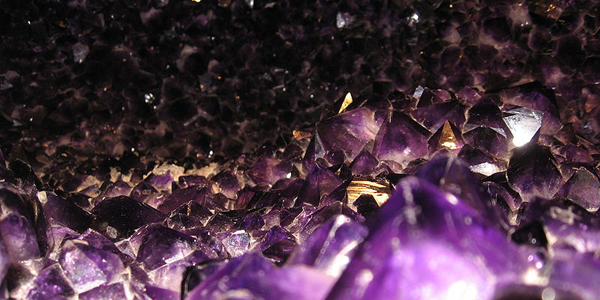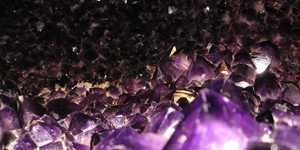Guess What's Inside: Rock Science
Have you and your kids ever cracked open a geode to reveal the crystals inside? This is a great way to add something special to a prized rock collection and can be a lot of fun for kids who are interested in geology, rocks, or crystals. Learn more about how to predict what's inside a geode with a hands-on, family-friendly rock science project.

A few years ago, my family visited Mammoth Cave in KY. After our awe-inspiring trek through some of the limestone-laden underground passages, we stopped at a nearby tourist shop. A giant bin of geodes in front of the store captured the attention of one of my students. From the outside, these geodes looked like regular, dirty, rough, spherical rocks. They didn't look special. But when it comes to a geode, it is the inside of the rock that counts!
At the souvenir shop, for an extra price, you can pay to have a store clerk use a wet saw to open the geode. (If you take a geode home unopened, you have to find your own way to the inside, possibly with a hammer.) The allure of immediate gratification won out over the fun of doing it himself later, and so my son spent a lot of time rummaging through what felt like thousands of possible geodes, each one begging to be "the one."
That there may be beautiful, colorful crystals inside is what makes the idea of a geode tantalizing for some students and collectors. Unfortunately, you can't tell for sure what is inside until you crack it open. Or can you?
Although the salesperson had helpful advice based on what she had observed about the relationship between a geode's exterior and weight and its interior, picking a geode that would reveal something amazing inside felt like a shot in the dark with a price tag to match.
My son's first pick was a bit of a disappointment once the inside was revealed. That, unfortunately, led to the expense of a second one, which didn't turn out much better.
External Clues
In reality, most of the geodes in that bin probably would have yielded very similar interiors. You might get luckier with one than another in terms of the development, size, quantity, or color of the crystals inside, but they were, really, all the same kind of rock. When presented with a range of types of geodes from which to pick, however, can you make an educated guess about the interior crystals based on visible and physical exterior clues and characteristics?
The Jumping for Geodes: Can You Tell the Inside from the Outside? geology science project guides students in a fun hands-on investigation to find out! Roll up your sleeves, get some volcanic or sedimentary rocks, and prepare to (maybe) be dazzled by the inside of a rock that looked perfectly ordinary from the outside.
Summary
Following the procedure in in the Jumping for Geodes geology project, students make careful observations about a number of different types of rocks and then open those rocks to see what kinds of geodes are inside. By charting physical characteristics and observations related to the outsides of various rocks and comparing their data to what they find inside the rocks, students can draw conclusions about what external clues may reveal about a rock's hidden geode.
Reminder: You can't just pick up any old rock, crack it open, and find treasure inside. Geodes are formed inside volcanic and sedimentary rocks. If you buy a geode "kit," make sure you look for one that contains more than one type of geode! Your students will have more fun (and learn more) comparing different kinds of geodes than just cracking over several of the same type.
Support for Geology resources and Project Ideas at Science Buddies is provided by Chevron.
Categories:
You Might Also Enjoy These Related Posts:
- 15 STEM Gifts & Science Kits You'll Feel Good About Giving
- 13 Boat Science and Submarine Science Projects and Experiments
- July 4th STEM! Summer Science Picks for Independence Day!
- 12 Science Kits for Summer Science Experiments and Discovery
- 15 Science Projects to Make and Give for Father's Day
- Ready, Set, Go! (Awesome Summer Science Experiments)
- Awesome Summer Science Experiments
- 10 STEM Activities with Cardboard Tubes










